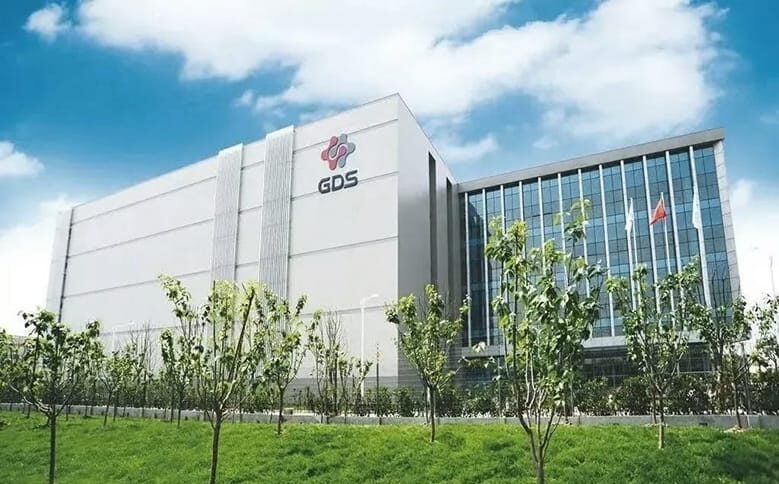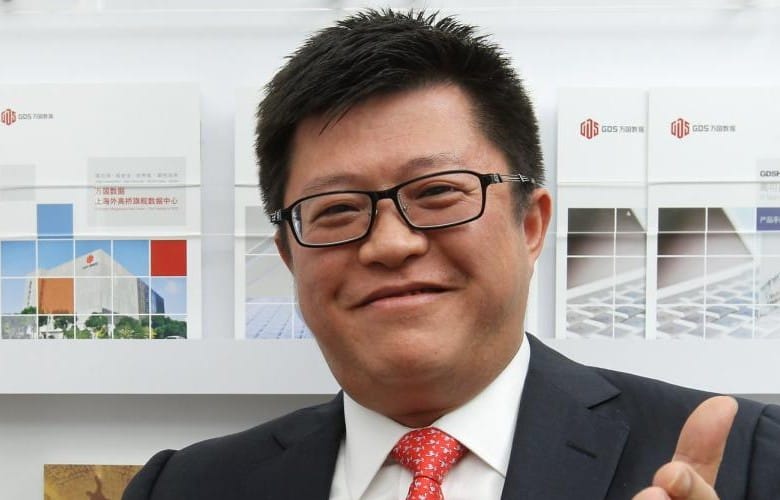
GDS’s China REIT is seeded with a facility in Kunshan (Image: GDS Holdings)
GDS posted a second-quarter net loss of RMB 70.6 million ($9.9 million), narrowing a year-earlier shortfall of RMB 231.8 million, as the Chinese data centre giant accelerated delivery of its backlog and took a “selective approach” to new orders.
Revenue climbed 12.4 percent year-on-year to RMB 2.9 billion in the April-June period, the Shanghai-based firm said Wednesday in a release. Area utilisation reached 479,186 square metres (5.2 million square feet) at the end of the quarter, up 14.1 percent year-on-year and 3.6 percent from the end of Q1. Utilisation rate rose to 77.5 percent from 72.4 percent a year earlier.
The improved report comes after GDS raised RMB 2.4 billion ($335 million) last month from the IPO of a Shanghai-listed REIT seeded with a 29-megawatt data centre in Jiangsu province, with the firm betting on the launch of one of China’s first digital infrastructure trusts to attract more capital to the sector and add momentum to the industry’s development.
“The successful initial public offering of our C-REIT on the Shanghai Stock Exchange marks a key strategic milestone,” said chairman and CEO William Huang. “Moving forward to the second half of the year, we are well-positioned to capture new business opportunities in Tier 1 markets, driven by tailwinds of AI evolution.”
Calm Before AI Storm
The delivery of a 152MW order signed in the first quarter is set to drive move-in over the next few quarters, Huang told analysts on an earnings call. The deal with an existing hyperscale client mandates that GDS complete two data centres in Langfang and Changshu, spanning 40,000 square metres, within six months of the signing.

GDS Holdings chairman and CEO William Huang
GDS aims to deliver 35 percent of its current backlog during the second half of the year after gross new bookings in the second quarter totalled 23,000 square metres, mainly from traditional internet and cloud businesses.
“AI demand was relatively quiet due to the uncertainty of chip supply in China,” Huang said, adding that the firm has 900MW of powered land held for future development in and around Tier 1 markets in anticipation of “coming waves of AI demand”.
GDS’s March sale of some of its data centres into a private REIT majority-owned by state-backed China Life — a deal that netted the firm RMB 1.2 billion ($170 million) — will affect earnings reports in the coming quarters because the comparisons won’t be apples to apples, according to chief financial officer Dan Newman.
Without the transaction, year-on-year adjusted EBITDA growth in Q2 would have been 13.9 percent instead of the reported 11.2 percent, Newman said. Gross profit rose 21.8 percent year-on-year as operating costs declined as a percentage of net revenue.
“On the funding side, we raised net proceeds of $676 million through new convertible senior notes and equity,” the CFO said. “Our new C-REIT platform provides us with enhanced financing flexibility. We remain focused on creating sustainable, long-term value for our business partners and shareholders.”
Market Whispers
Bloomberg reported last week that Singapore’s ST Telemedia was considering selling its entire 34 percent stake in GDS, which trades on the NASDAQ and in Hong Kong. Temasek-backed STT is sounding out interest from potential buyers for the stake, according to people who spoke to the news agency.
GDS is also considering a US IPO of its international arm that could raise $500 million, per a February Bloomberg account. Unnamed sources said the firm had engaged banks about working on the deal.
The former GDS International, rebranded as DayOne at the start of this year, runs facilities in Hong Kong and Southeast Asia and describes itself as having separate corporate governance, operations, finance and technology functions from its mainland China parent.

Leave a Reply